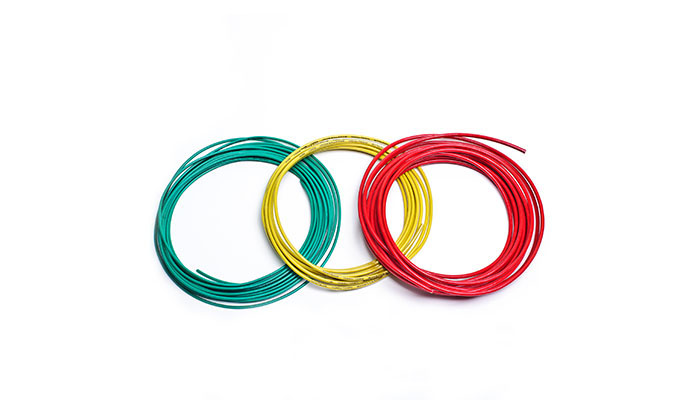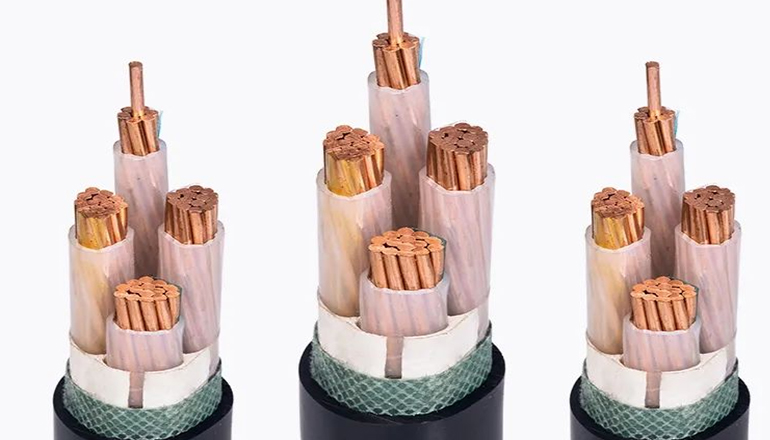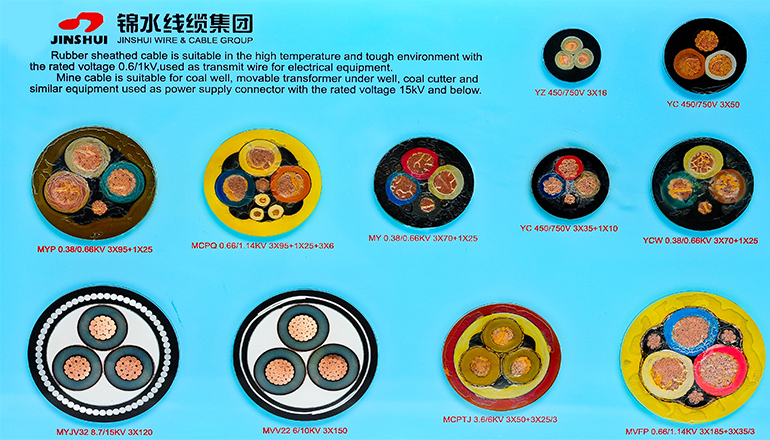- Offices Time:24 Hours Online
- Email:[email protected]
- WhatsApp:+8618339938759

Posted on March 21, 2023
High Temperature Wire Types
What is a high temperature wire?
High temperature wire is a type of wire that is designed to operate effectively in high-temperature environments. These wires are usually made of materials that can withstand temperatures higher than those of standard wires. The temperature rating of high-temperature wires can vary depending on the material used, but they can typically operate at temperatures above 150°C (302°F) and up to 2000°C (3632°F) or higher.
Some common materials used to make high-temperature wires include nickel, tungsten, molybdenum, and ceramics. These materials have high melting points and can withstand high temperatures without breaking down or becoming damaged. The insulation used on high-temperature wires is also designed to withstand high temperatures and prevent the wire from shorting out.
Why should the wire be resistant to high temperature?
1.Safety
If a wire is not designed to withstand high temperatures, it can become damaged, melt, or catch fire when exposed to high temperatures. This can create a safety hazard for people and property.
2.Reliability
In many applications, wires carry important signals or power to critical systems. If a wire fails due to high temperatures, it can cause the system to malfunction or fail entirely. This can be costly and even dangerous in some cases.
3.Efficiency
Some systems require wires to operate at high temperatures to function properly. If the wire is not designed to withstand high temperatures, it can cause the system to operate inefficiently, leading to increased energy consumption and higher costs.
4.Durability
In some high-temperature applications, the wire may be exposed to harsh environments, such as chemicals or extreme weather conditions. If the wire is not designed to withstand these conditions, it can become damaged or corroded, leading to premature failure and the need for costly repairs or replacements.

What are the types of high temperature wire?
There are several types of high-temperature wires available, each designed for specific applications and operating conditions. Some common types of high-temperature wire include:
1.Nickel-Based Wires
Nickel-based wires are known for their excellent high-temperature performance and are commonly used in aerospace and other high-heat applications. They are highly resistant to corrosion and can withstand temperatures up to 1000°C (1832°F) or higher.
2.Tungsten-Based Wires
Tungsten-based wires are often used in heating applications, such as furnace elements, due to their high melting point and resistance to oxidation. They can withstand temperatures up to 2400°C (4352°F).
3.Molybdenum-Based Wires
Molybdenum-based wires are used in high-temperature vacuum and inert gas environments due to their high melting point and low vapor pressure. They can withstand temperatures up to 2000°C (3632°F).
4.Ceramic-Based Wires
Ceramic-based wires are made from materials such as alumina and zirconia and are used in high-temperature applications where insulation and electrical properties are critical. They can withstand temperatures up to 1600°C (2912°F).
5.Fiber Glass Wires
Fiber glass wires are often used in electrical appliances and heating devices. They can withstand temperatures up to 450°C (842°F) and are highly resistant to fire.
6.Silicone-Based Wires
Silicone-based wires are used in a wide range of applications due to their high-temperature resistance and flexibility. They can withstand temperatures up to 200°C (392°F).
7.PTFE-Based Wires
PTFE-based wires, also known as Teflon wires, are known for their excellent resistance to chemicals and high temperatures. They can withstand temperatures up to 260°C (500°F) and are commonly used in aerospace, automotive, and medical applications.
8.Kapton-Based Wires
Kapton-based wires are made from a polyimide material that can withstand temperatures up to 400°C (752°F). They are commonly used in high-temperature aerospace and electronics applications.
9.Nickel-Iron Alloy Wires
Nickel-iron alloy wires, also known as constantan wires, have a high resistance to temperature changes and can withstand temperatures up to 500°C (932°F). They are often used in temperature sensing and control applications.
10.Silver-Plated Copper Wires
Silver-plated copper wires are used in high-temperature applications that require excellent electrical conductivity and high temperature resistance. They can withstand temperatures up to 260°C (500°F).
What insulation materials are usually used for high temperature wires?
High-temperature wires require insulation materials that can withstand the high temperatures and protect the wire from damage or shorting out. If you want to know about wire and cable insulation materials and characteristics, you can click to view this article: Wire and Cable Insulation Materials.Some of the common insulation materials used for high-temperature wires include:
PTFE (Polytetrafluoroethylene)
PTFE is a popular insulation material for high-temperature wires due to its excellent resistance to chemicals, moisture, and high temperatures up to 260°C (500°F). It is commonly used in aerospace, automotive, and medical applications.
FEP (Fluorinated Ethylene Propylene)
FEP is another fluoropolymer insulation material that can withstand high temperatures up to 200°C (392°F). It has excellent chemical resistance and is commonly used in electrical and electronic applications.
ETFE (Ethylene Tetrafluoroethylene)
ETFE is a thermoplastic fluoropolymer that can withstand temperatures up to 150°C (302°F). It is commonly used in the aerospace and automotive industries due to its lightweight and high-temperature resistance.
Ceramic
Ceramic insulation is used for high-temperature wires that require excellent thermal and electrical insulation properties. Ceramic insulation can withstand temperatures up to 1600°C (2912°F) and is commonly used in aerospace and industrial applications.
Silicone
Silicone insulation is commonly used in high-temperature wires due to its flexibility and resistance to high temperatures up to 200°C (392°F). It is commonly used in heating elements and electrical appliances.
Mica
Mica insulation is a natural mineral-based material that can withstand high temperatures up to 1000°C (1832°F). It is commonly used in heating elements, electrical equipment, and industrial applications.
Fiberglass
Fiberglass insulation is a commonly used insulation material for high-temperature wires due to its high-temperature resistance up to 450°C (842°F) and excellent thermal and electrical insulation properties. It is commonly used in heating elements and electrical appliances.
Polyimide
Polyimide insulation is a thermosetting polymer that can withstand high temperatures up to 400°C (752°F). It has excellent thermal stability and electrical insulation properties, making it suitable for use in aerospace and industrial applications.
Teflon
Teflon insulation is a fluoropolymer material that can withstand high temperatures up to 260°C (500°F). It has excellent resistance to chemicals and moisture and is commonly used in electrical and electronic applications.
PEEK (Polyether ether ketone)
PEEK insulation is a high-performance thermoplastic polymer that can withstand temperatures up to 260°C (500°F). It has excellent chemical resistance and mechanical properties, making it suitable for use in industrial and aerospace applications.
The selection of the appropriate insulation material for high-temperature wires depends on the specific application and operating conditions, such as the required temperature range, electrical conductivity, resistance to chemicals, and mechanical properties.
What factors need to be considered when choosing a high temperature wire?
Choosing the right high-temperature wire involves considering several factors, such as the temperature range, electrical properties, mechanical properties, and environmental conditions of the application. Here are some key considerations when selecting a high-temperature wire:
1.Temperature Range
Determine the maximum temperature that the wire will be exposed to in the application. Choose a wire with an insulation material that can withstand the required temperature range.
2.Electrical Properties
Consider the electrical conductivity, resistance, and insulation properties of the wire. Choose a wire that meets the required electrical specifications for the application.
3.Mechanical Properties
Consider the mechanical properties of the wire, such as tensile strength, flexibility, and abrasion resistance. Choose a wire that can withstand the mechanical stresses of the application.
4.Environmental Conditions
Consider the environmental conditions of the application, such as exposure to chemicals, moisture, and radiation. Choose a wire with an insulation material that can withstand the environmental conditions of the application.
5.Standards and Certifications
Choose a wire that complies with relevant industry standards and certifications, such as UL (Underwriters Laboratories) and CSA (Canadian Standards Association) standards.
6.Application-specific requirements
Consider any specific requirements of the application, such as size and weight restrictions, and select a wire that meets those requirements.
7.Supplier reliability
Consider the reputation and reliability of the wire supplier. Choose a reputable supplier that can provide high-quality wires with consistent performance.
Before choosing high temperature wires, we need to have a certain understanding of high temperature wires, and fully understand the use and performance of the wires, so as to ensure that we can reduce the time cost when choosing, and choose the appropriate wires and cables as soon as possible.
- Previous:Triplex service wire
- Next:AC cables and DC cables
Post categories
Most Popular Posts
-
High temperature cable introduction
July 26, 2024 -
Kenya Power and Energy Exhibition 2024
June 11, 2024 -
Introduction of rubber sheathed cable
June 5, 2024 -
The 135th China Canton Fair
March 20, 2024





